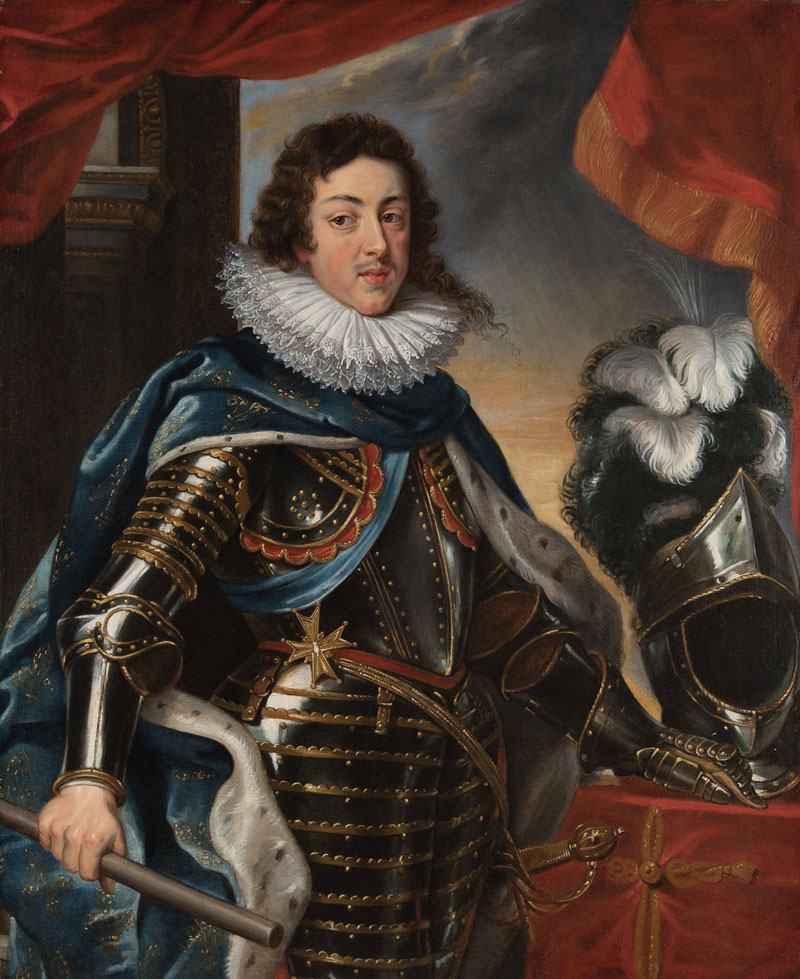Peter Paul Rubens (Flemish, 1577–1640)
Portrait of Anne of Austria, Queen of France, c. 1622–25
Oil on canvas
The Norton Simon Foundation, F.1965.1.059.P
Anne of Austria (1601–1666), queen of France, is shown here at the age of 21 in a ceremonial blue satin and ermine gown, adorned with jewels and golden fleurs-de-lis. As in her other portraits, Anne displays her famously lovely hands against the luxurious fabric of her dress. The pendant to this portrait, which represents the queen’s husband, King Louis XIII (1601–1643), is also in the Museum’s collection (Figure 2). A written account of the Mass celebrating the royal couple’s 1615 marriage, when they were both just 14 years old, offers an impression of what it was like to wear an opulent garment such as the one depicted here: “The king looked at [Anne] often, laughing: she, although burdened by the weight of the robes and gems, sweating large drops, could not contain herself from smiling back at him.” The evocative and likely embellished description suggests a personal connection between the young king and queen, though in reality they remained distant throughout their marriage, which was purely a political alliance.

Figure 2: Peter Paul Rubens (Flemish, 1577–1640), Portrait of Louis XIII, King of France, c. 1622–25, oil on canvas, The Norton Simon Foundation
View ImageImage Credit: